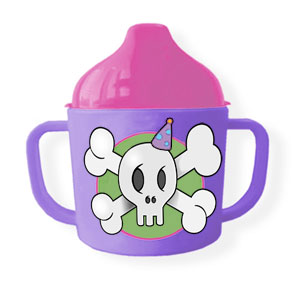 According to The American Heritage® Medical Dictionary, “Carb Loading” is:
According to The American Heritage® Medical Dictionary, “Carb Loading” is:
A dietary practice that increases carbohydrate reserves in muscle tissue through the consumption of extra quantities of high-starch foods and is often followed by endurance athletes prior to competition.
In truth, there is no better guide on Carb Loading then watching the average U.S. mom feed her child. Cynical, you say? Lets let the facts answer that.
Into the mouths of babes
The majority of pediatric medical professionals recommend breast-feeding as a way of ensuring infant health. Organizations such as The Institute of Medicine and the American Academy of Pediatrics (AAP) advise moms to exclusively breast-feed for the first six months. Feeding a baby solids too early in life may result in the child becoming obese before reaching preschool. Formula-fed babies who were given solid foods before 4 months of age have an increased risk of obesity. The fact that high fructose corn syrup (HFCS) is usually in the first few ingredients of baby formula hasn’t been forgotten either. Since studies have shown HFCS can make big people heavier…why not little ones?
Kiddie Carb Loading
There isn’t a more typical symbol of child Carb Loading than the sippy cup. Many parents associate juice as an easy way to get small children to have fruit in their diets. The problem is that juice has some of the highest levels of sugar in any type of beverage you can drink. Over a third of parents surveyed reported giving their children (ages one to five years of age) two or more cups of juice in a typical day. That is double the amount recommended by the AAP. You read that right. The AAP advises that children under the age of six should drink no more than ONE serving of juice a day.
You have probably heard about the New York City maximum soda size controversy. The problem many New Yorkers have with the 10 oz. soda size restriction is that they feel they lose their right to choose how much sugar they can drink. Whether or not that is the case (because you can buy as many sodas as you want to) the fact remains that children are not as capable of exercising their rights as it pertains to sugar consumption. Much like adults, if you put a beverage in front of a child they will sip on it until it’s empty.
THEY get what THEY pay for
The food and beverage industry spends over $2 billion a year on marketing to children. They wouldn’t be spending that kind of money if it wasn’t producing results. Marketing to children ensures that when they grow up they will buy their products as an adult. You have probably heard the following statistic: 1 in 3 adults in the U.S. is obese, and by the year 2050 1 in 3 will be diabetic. Not to put too fine a point on it, but… The adults of 2050 are the children of today.
So, getting back to Carb Loading. Some athletes still practice this behavior because they know they will be able to burn off the massive amounts of carbs by rigorous exertion. The University of Michigan recently conducted a study on the “couch potato syndrome.” They listed “not enough exercise” as the most critical health concern for children, followed by childhood obesity. Children are doing less physical activity than at any other time in human history. So a vast number of children today are getting Carb Loaded for a race they will never be capable of running.
The New England Journal of Medicine reported a few years back that today’s children will be the first generation to live a shorter life span than their parents. Sobering.
At the end of the day, this is about the power of choice. An adult has the ability to decide whether they want to drink another 10 oz. soda or not. Children follow the example of their parents and the funny little cartoon characters in the T.V. commercials. Based on the numbers…it’s time to change the example.
Lathe Poland is one of the creators of Carb-Loaded a documentary film that examines the causes of the diabetes epidemic.


Speak Your Mind
You must be logged in to post a comment.